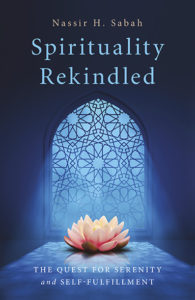Nassir H. Sabah
The reference in the Quran to the development of the human embryo is in verse 13 and the first part of verse 14, Chapter 23 (The Believers).
“Then We made him a drop of semen in a secure dwelling place (13). Then of the drop We created a clinging mass, then of the clinging mass We created an embryonic lump, then of the embryonic lump We created bones and We clothed the bones with flesh; then We brought him into being as another creation…(14).”
ثُمَّ جَعَلْنَـٰهُ نُطْفَةً فِى قَرَارٍ مَّكِينٍ (13). ثُمَّ خَلَقْنَا ٱلنُّطْفَةَ عَلَقَةً فَخَلَقْنَا ٱلْعَلَقَةَ مُضْغَةً فَخَلَقْنَا ٱلْمُضْغَةَ عِظَـٰمًا فَكَسَوْنَا ٱلْعِظَـٰمَ لَحْمًا ثُمَّ أَنشَأْنَـٰهُ خَلْقًا ءَاخَرَ…(14).
This passage in Chapter 23 consists of 23 Arabic words and uses 23 letters of the Arabic alphabet of 28 letters. Humans have 23 pairs of chromosomes in a normal somatic cell. .
Fertilization by the sperm cell is referred to in verses 45 and 46 of Chapter 53 (The Star):
“And that He creates the two – male and female (45) from a drop of ejaculated semen (46).”
وأَنَّهُۥ خَلَقَ ٱلزَّوْجَيْنِ ٱلذَّكَرَ وَٱلْأُنثَىٰ (45) مِن نُّطْفَةٍ إِذَا تُمْنَىٰ (46).
These verses are noteworthy in the following respects:
- The number of the second verse (46) is the total number of chromosomes in a normal human somatic cell (23 pairs).
- The chromosomes in each of the 23 pairs are identical in females, including a pair of sex chromosomes X, whereas in males, the two sex chromosomes are nonidentical X and Y chromosomes. The number of identical pairs of chromosomes is therefore 22 in males and 23 in females, which sum to 45, the number of the first verse. This verse ends with “male and female”, representing addition.
- The two verses clearly affirm that the sex of the baby is determined by the semen, which contains sperm cells carrying either X chromosomes or Y chromosomes. Fertilization of an ovum by a sperm cell carrying an X chromosome results in a baby girl, whereas fertilization by a sperm cell carrying a Y chromosome results in a baby boy.
